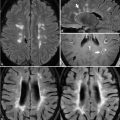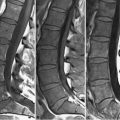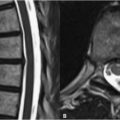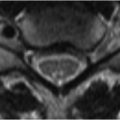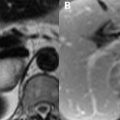61 Thoracic Vasculature In the workup of pulmonary embolism, contrast-enhanced CT is most commonly used; MRI is reserved for patients with iodinated contrast allergies or in whom radiation exposure should be minimized. Nevertheless, MRI remains promising due to its ability to obtain a variety of morphologic and functional information about the lungs, their vasculature, and other relevant structures within a single exam. On SE images the pulmonary vasculature appears as low SI distinct from a high SI intraluminal embolus. Peripherally, less uniform blood flow leads to inconsistent signal voids, rendering this pattern less useful. On cine SSFP sequences embolus appears as low SI against high SI blood. By far the most commonly acquired MRI scan for the assessment of pulmonary embolism is contrast-enhanced 3D MRA. Both pulmonary perfusion studies and high-resolution contrast-enhanced GRE T1WI may be obtained. In the latter, embolus appears as a foci of low SI against the enhancing vasculature. Chronic emboli may demonstrate an alternative appearance as in the contrast-enhanced MIP MRA image of Fig. 61.1A where enhancing vasculature is absent in the right middle and inferior lobes and the central pulmonary arteries are dilated. A four-chamber cine image of the same patient demonstrates right ventricular dilatation and hypertrophy (Fig. 61.1B
![]()
Stay updated, free articles. Join our Telegram channel

Full access? Get Clinical Tree


